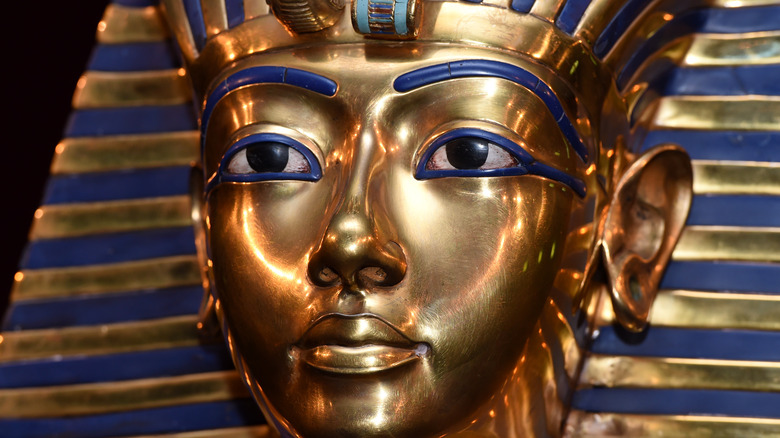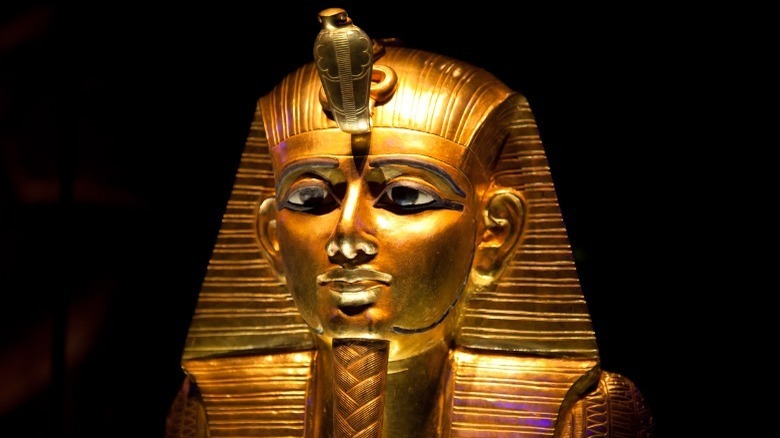Why Death Masks Were Important To Ancient Egyptians
The Ancient Egyptian view of life and death is immortalized in the relics of their time. The mummified remains that are so closely associated with their life were an attempt to preserve the body so that the soul could return to it after its traversal to another plane, per Biography. Atop these remains were often strange masks that covered the faces of the dead, a practice seen from the Middle Kingdom all the way until the 1st century CE. Like mummification, the practice reveals the Egyptian approach to life after death.
Egyptians believed that death masks aided the soul's search of its human body after death. Working in conjunction with mummification, the two rituals reveal the belief of life and death as two connected processes that are forever intertwined. One of the most famous death masks is that of Tutankhamun (pictured above), an ancient Egyptian pharaoh who ruled until 1324 BCE, per History.
Death masks are reflections of their time
The composition of Egyptian death masks can vary depending on the time period and deceased underneath the veil. While it was common to see masks crafted from a wooden mold for those of lower class, royals like Tutankhamun were adorned with pieces made from precious metals like gold or bronze. Per The University of Waterloo, gallerist Andre Emmerich used his book "The Sweat of the Sun and the Tears of the Moon" to explore the creation of these fascinating golden masks by an intense hammering that mirrors the process used by modern smiths.
Beyond the facial features of the masks, which were designed to resemble the dead, the pieces can also shed light on the historical nature of the time. According to Barakat Gallery, masks sometimes include jewelry and makeup that reflects the popular fashions of the era. For this reason, these masks are unique and educational artifacts of the time periods of Egypt and the people who resided within the country.

